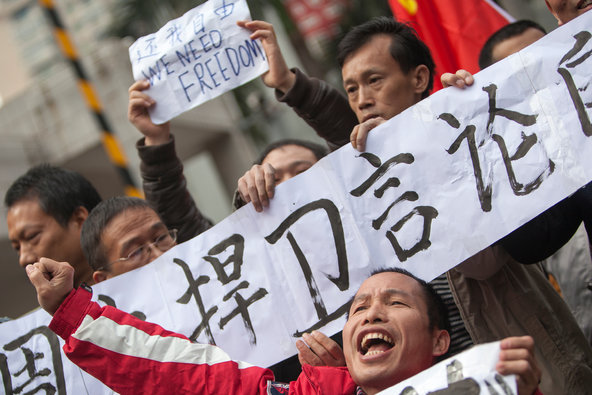So severe are China’s environmental woes, especially the noxious air, that top government officials have been forced to openly acknowledge them. Fu Ying, the spokeswoman for the National People’s Congress, said she checked for smog every morning after opening her curtains and kept at home face masks for her daughter and herself. Li Keqiang, the new prime minister, said the air pollution had made him “quite upset” and vowed to “show even greater resolve and make more vigorous efforts” to clean it up.
What the leaders neglect to say is that infighting within the government bureaucracy is one of the biggest obstacles to enacting stronger environmental policies. Even as some officials push for tighter restrictions on pollutants, state-owned enterprises — especially China’s oil and power companies — have been putting profits ahead of health in working to outflank new rules, according to government data and interviews with people involved in policy negotiations.
For instance, even though trucks and buses crisscrossing China are far worse for the environment than any other vehicles, the oil companies have delayed for years an improvement in the diesel fuel those vehicles burn. As a result, the sulfur levels of diesel in China are at least 23 times that of the United States. As for power companies, the three biggest ones in the country are all repeat violators of government restrictions on emissions from coal-burning plants; offending power plants are found across the country, from Inner Mongolia to the southwest metropolis of Chongqing.
The state-owned enterprises are given critical roles in policy-making on environmental standards. The committees that determine fuel standards, for example, are housed in the buildings of an oil company. Whether the enterprises can be forced to follow, rather than impede, environmental restrictions will be a critical test of the commitment of Mr. Li andXi Jinping, the new party chief and president, to curbing the influence of vested interests in the economy.
Last month, after deadly air pollution hit record levels in northern China, officials led byWen Jiabao, then the prime minister, put forward strict new fuel standards that the oil companies had blocked for years. But there are doubts about whether the oil companies will comply, especially since oil officials resisted a similar government order for higher-grade fuel four years ago. State-owned power companies have been similarly resistant. The companies regularly ignore government orders to upgrade coal-burning electricity plants, according to ministry data. And as with the oil companies, the power companies exert an outsize influence over environmental policy debates.
In 2011, during a round of discussions over stricter emissions standards, the China Electricity Council, which represents the companies, pushed back hard against the proposals, saying that the costs of upgrading the plants would be too high.
“During the procedure of setting the standard, the companies or the industry councils have a lot of influence,” said Zhou Rong, a campaign manager on energy issues for Greenpeace East Asia. “My personal opinion is even if we have the most stringent standards for every sector, the companies will violate those.”
On Feb. 28, Deutsche Bank released an analysts’ note saying that China’s current economic policies would result in an enormous surge in coal consumption and automobile sales over the next decade. “China’s air pollution will become a lot worse from the already unbearable level,” the analysts said, calling for drastic policy changes and “a strong government will to overcome the opposition from interest groups.”
The report estimated that the number of passenger cars in China was on track to hit 400 million by 2030, up from 90 million now.
Mia Li and Amy Qin contributed research from Beijing, and Chris Buckley contributed reporting from Hong Kong.
Article source: http://www.nytimes.com/2013/03/22/world/asia/as-chinas-environmental-woes-worsen-infighting-emerges-as-biggest-obstacle.html?partner=rss&emc=rss
